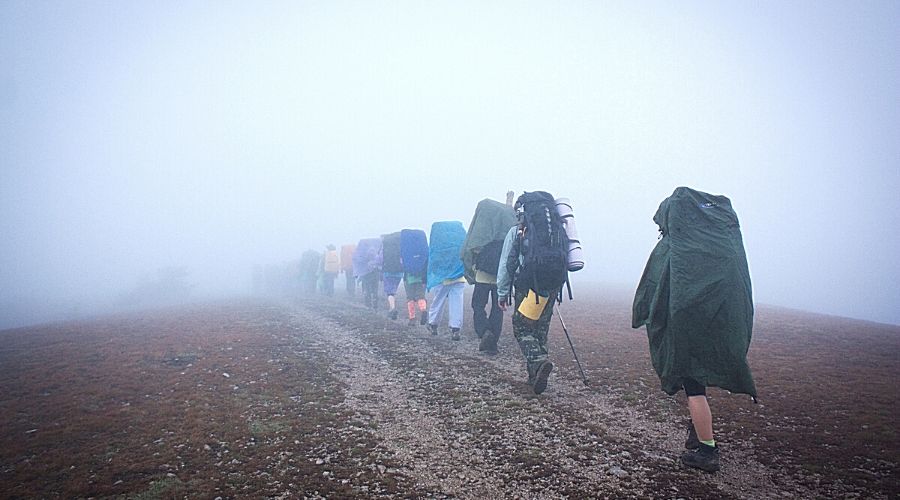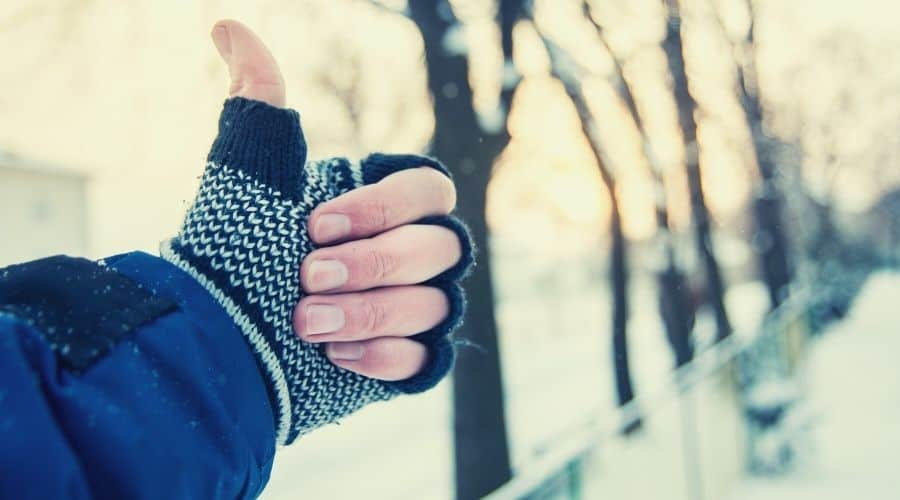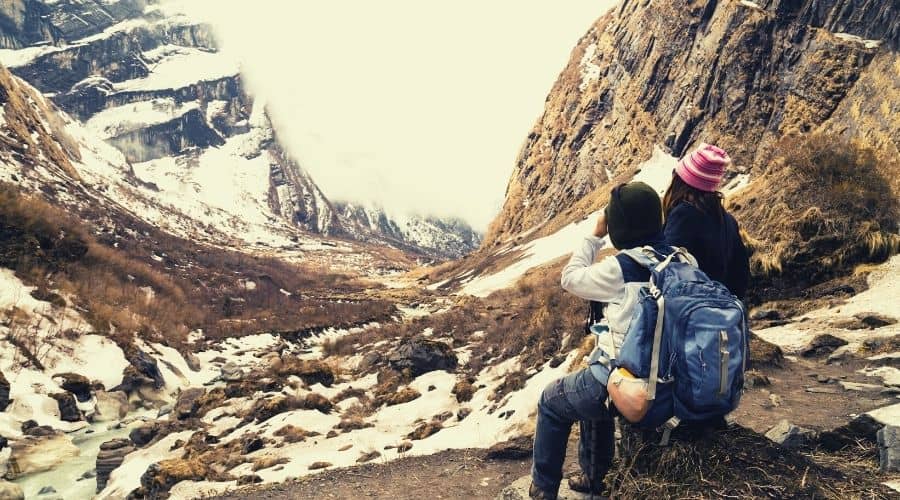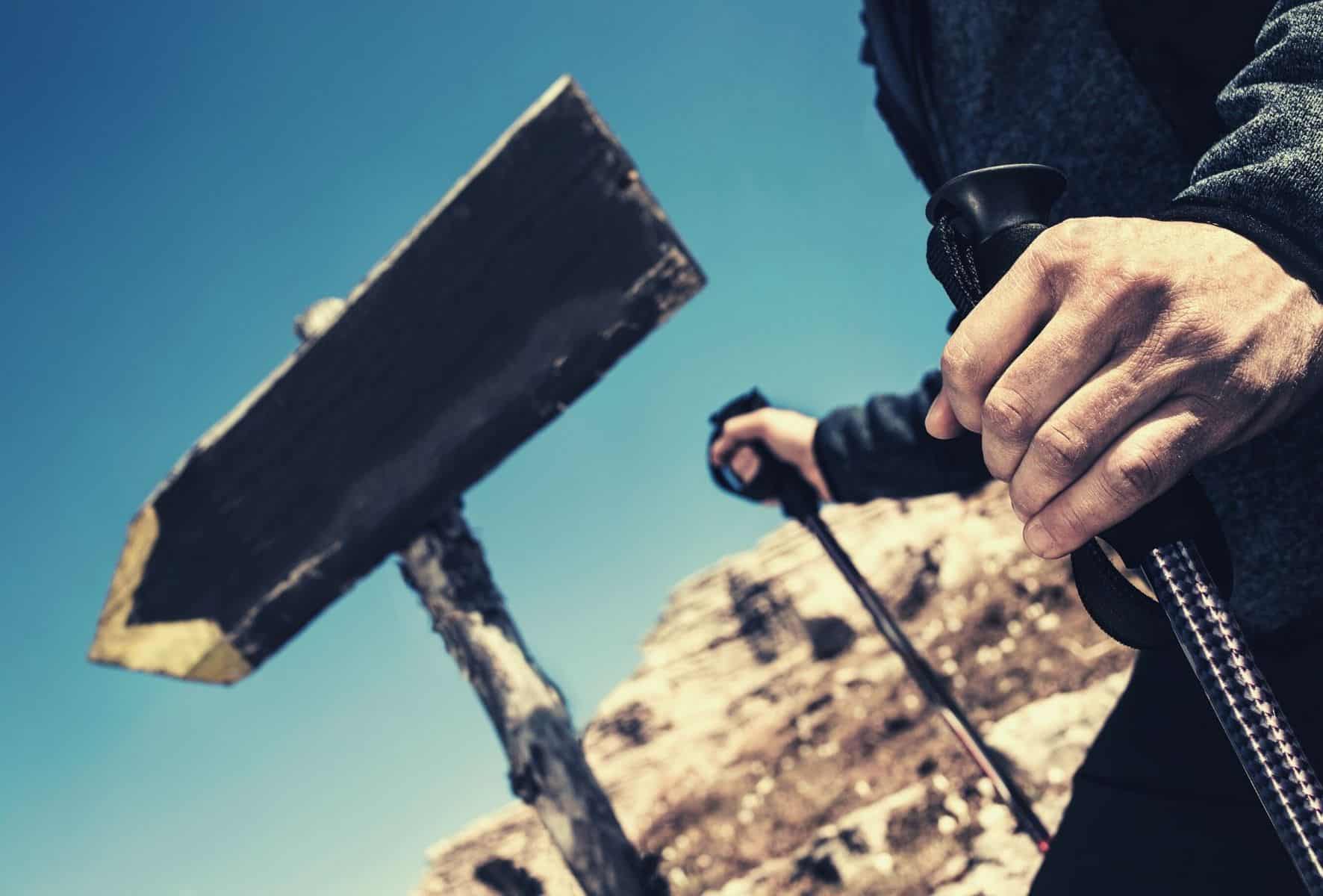Death.
Taxes.
Dodgy politicians.
Cold hands when hiking in winter.
For many of us, they are life’s great inevitabilities, things to be accepted with stoic resignation, and a few choice cuss words.But there’s no need to be quite so fatalistic about it. At least, that is, when it comes to avoiding the pains of frozen paws on our winter wanders. Our guide on how to keep your hands warm in wintertime, we hope, will demonstrate why…
Table of Contents
- How to Prevent Frozen Paws When Winter Hiking: 10 Tips
- 1. Pre-empt the Chills
- 2. Keep You Core Temperature Up With Adequate Layering
- 3. Keep Out the Elements
- 4. Match Your Gloves to Your Activity Type
- 5. Use Liner Gloves to Limit Exposure
- 6. Bring Backup
- 7. Placing Hand Warmer in Gloves
- 8. Limit Your Breaks to Avoid Body Temperature Loss
- 9. Lower Your Poles
- 10. Use Your Body’s Hot Bits to Warm Up Frozen Digits
- Conclusion: How to Keep You Hands Warm on Winter Hikes
How to Prevent Frozen Paws When Winter Hiking: 10 Tips
1. Pre-empt the Chills
Prevention, they say, is always better than cure. In the case of cold hands, it’s also a whole lot easier.
And less painful…if you’ve ever had a bout of the screaming barfies, you’ll know only too well that frozen digits can be downright agonizing.
Here’s how it’s done:
For starters, work on the principle that it’s far easier to begin warm than to get warm once you’ve cooled down.
Therefore, preventing cold hands starts at the point of departure—your car, home, tent, or the mountain hut you’ve slept in.
At this stage in the day, you’re unlikely to feel cold due to having just left a heated environment—something that can give you a false sense of security and see you setting off underdressed. And, perhaps, ungloved…
The remedy?
Start off wearing gloves and keep them on until you’re sure that temps are warm enough to do without – it’ll be far easier to shed excess heat by taking them off than it will be to restore heat if you let your paws cool down excessively.

2. Keep You Core Temperature Up With Adequate Layering
Cold hands are often a result of inadequate insulation and heat loss on the rest of your body, not just on your hands.
When your core temperature drops, your body goes into “survival mode” and concentrates heat around the vital organs, sending less heat to the extremities.
Even if you are wearing the best hiking gloves money can buy, if your core is underdressed, your hands and feet will eventually succumb to the temperature loss occurring in your body as a whole.
Of course, the solution is to make sure our core is kept warm enough at all times so our body can pump out plenty of heat to our extremities.
This means using the layering system and making sure that our heat retention mid-layer, in particular, is beefy enough to provide the insulation required by ambient temperatures.

3. Keep Out the Elements
Moisture can draw heat away from the body up to 25 times faster than air. As such, keeping your hands dry at all times is essential to keeping them warm.
While not as harmful to body heat as moisture, windchill is also no friend of fingers.
In wet and/or windy conditions, therefore, be sure to wear gloves that use a waterproof membrane (Gore-Tex or similar).
Fleece or wool gloves are cozy options in dry, calm weather, but will saturate quickly in humid conditions. Wind, moreover, will likely cut through them like a hot knife through butter.
4. Match Your Gloves to Your Activity Type
If your gloves are too beefy or score low on breathability, there’s a chance they’ll soak up on the inside as a result of sweat. And sweat, sadly, can cause frozen fingers just as quickly as saturation by rain or snow.
To avoid excess perspiration on your paws, it’s crucial to find gloves suitable for your activity type.
For more aerobic, high-output activities like trail running or ski-mountaineering, aim for a lightly insulated glove with a waterproof-breathable membrane. For more slow-moving activities like hiking, mountaineering, or snowshoeing, beefier gloves or mitts with down or fleece insulation become an option.
Also, in activities where frequent use of your hands is necessary—scrambling, outdoor photography, and orienteering, for example—the chances are you’ll be tempted to deglove and expose your paws if your gloves are too chunky or clumsy.
If you’re not a fan of liners, the solution is simple: choose a pair of thin warm gloves that are agile enough to let you do everything you need to do without taking them off.

5. Use Liner Gloves to Limit Exposure
Just a few seconds of frigid air can be all it takes to turn bared flesh from balmy to bitter.
By wearing a light set of liner gloves, you’ll be able to safely remove your shell glove to perform more delicate tasks—adjusting camera settings, tying laces, taking a pee, taking compass readings, etc.—without exposing your skin.
6. Bring Backup
Saturation from rain or snow, a drop in a puddle or over a cliff, and rips or tears are just a few of the ways you could be left gloveless when out on a hike.
And without any line of defense against the elements, icy hands become something of a foregone conclusion…unless, that is, you happen to be carrying a pair of spares in your pack.
Given that the average pair of waterproof, windproof, and insulated gloves weigh in at around a mere 8 ounces, there is no excuse not to do so…
7. Placing Hand Warmer in Gloves
Lightweight. Effective. Cheap. Barring “durable,” these three qualities are among the most desirable attributes in any outdoor product. And they’re also just what chemical hand warmers provide.
This small addition to your kit is no substitute for suitable gloves but a packet of hand warmers could prove to be worth its weight in gold in a pinch.
Simply follow the instructions on the packet and place the hand warmers inside your gloves. The chemical reaction of the hand warmers should quickly get your fingers warm again.

8. Limit Your Breaks to Avoid Body Temperature Loss
The surest way to catch a chill when hiking is to stop moving. This is particularly true if you’ve already built up a sweat, in which case just a ten or fifteen-minute breather could leave you chilled to the bone.
The solution is to pay attention to your pacing and limit your rest stops to a max of five minutes (depending on temps and conditions).
Instead of moving fast and taking frequent breaks, move at a slower, steady pace that’s fast enough to keep you warm but not so fast that you’re leaking sweat. This way, you’ll probably need less frequent breaks and feel peachy again after just a few minutes of R&R.
During breaks, it’s also important to keep your blood flow moving. This can be done by wiggling your fingers, shaking your hands, or waving your arm in circles—you might look nutty as a fruitcake, but at least you’ll be a warm fruitcake as opposed to a cold one.
9. Lower Your Poles
Using trekking poles places our hands in an unnaturally high position that makes it more difficult for blood – and, thus, heat – to reach our fingers. If gripping poles tightly, moreover, blood flow around the hands is restricted further still.
The solution to the above is to use the wrist loops on your poles to grip them lightly and adjust the height of your poles, so your hands remain around waist height.
10. Use Your Body’s Hot Bits to Warm Up Frozen Digits
If your hands do get chilled, there are a few remedial actions you can take to heat them up again.
First of all, throw on an extra layer – as mentioned in Tip #1, cold hands are often the result of a lower core temperature caused by insufficient insulation.
Secondly, remove your gloves and place your hands in your armpits, between your legs, or on your belly – all of which, you’ll find, is pleasantly toasty and like small, fleshy furnaces of the anatomy.
If you’re too cold to do so, make use of your partner’s parts* – and be sure to buy them a pint at the end of the day as thanks!
* for propriety’s sake, we advise asking them first…
Conclusion: How to Keep You Hands Warm on Winter Hikes
Cold hands when hiking are no fun at all, but, as the above list hopefully demonstrates, they’re also not quite the foregone conclusion that many are apt to think. Armed with the above knowledge and tips, you can help make your future winter outings a lot more enjoyable and frozen-digit-free.
So, how did you enjoy our list?
If you have any comments or questions about our list, please drop them in the comments box below. And if you think your friends might benefit from reading our tips, feel free to share!

